Skiblades are short, lightweight skis (26–47 inches long) that simplify skiing while keeping it fun. They’re compact, easy to control, and don’t require special ski boots - regular winter boots work just fine. Perfect for beginners or anyone tired of lugging around bulky gear, skiblades are great for quick turns, tight spaces, and various terrains, from groomed runs to powder. Plus, they’re budget-friendly compared to traditional ski setups, with prices starting around $250.
Why skiers love them:
- Portability: Small enough to fit in a backpack or carry-on.
- Ease of use: Lower learning curve and better control.
- Affordability: Costs less than traditional skis.
- Versatility: Works on slopes, moguls, powder, and even terrain parks.
Whether you’re a first-timer or a seasoned skier looking for something lighter and easier, skiblades are a hassle-free way to enjoy winter sports.
What Are Skiblades?
Skiblades Definition
Skiblades are short, lightweight skis that range from 26 to 47 inches (65 to 120 cm) in length. You might also hear them called snowblades, skiboards, or short skis – all different names for the same compact winter sports gear designed to make skiing easier and more fun.
Think of skiblades as the "mini-me" of traditional skis. While brands like Rossignol or Salomon produce skis that are 5.5 to 6.5 feet long, skiblades pack all the essential features of skiing into a smaller, more manageable size. They come with edges for grip, a curved shape for turning, and bindings for your feet – just like regular skis – but with a focus on convenience and control. These compact skis bring plenty of practical perks, which we’ll dive into in a moment.
What makes skiblades stand out is their simplicity. In a world where ski gear can feel overly technical and intimidating, skiblades strip things down to the basics. They’re not about hitting record speeds or tackling expert-level slopes – they’re about having fun on the snow without the hassle.
Let’s take a closer look at what makes skiblades such a practical and fun choice.
Main Features of Skiblades
Compact Size and Weight make skiblades a breeze to handle. Most pairs weigh just 3 to 5 pounds, about half the weight of traditional skis. This makes them easy to carry in a backpack, toss in your car trunk, or even bring as carry-on luggage for your next ski trip to Park City or Whistler.
Boot Compatibility is another big selling point. Unlike traditional skis that require pricey, specialized ski boots (ranging from $200 to $800), most skiblades work with regular winter boots or snowboard boots. For instance, Snowfeet* skiblades are designed to fit nearly any winter footwear, making them a budget-friendly option for families who don’t want to invest in multiple pairs of ski boots.
Easy Maneuverability is a natural result of their shorter length. Skiblades allow for quicker turns and better control, which is especially helpful on crowded slopes at resorts like Mammoth Mountain or Killington. Traditional long skis can feel bulky in tight spaces, but skiblades make navigating the slopes feel effortless.
Durability and Construction are on par with – or even better than – traditional skis. High-quality skiblades, like those from Snowfeet*, are built with top-notch materials that can handle everything from groomed runs to powder. Plus, their shorter length reduces stress on the equipment during falls or rough landings, which may even help them last longer than traditional skis.
Affordability is another major plus. A complete traditional ski setup can easily run between $800 and $1,500. In contrast, a solid pair of skiblades usually costs under $300, making winter sports more accessible for families and beginners.
These features highlight why skiblades are becoming a go-to choice for anyone looking for a fun, low-maintenance way to enjoy the slopes.
How Skiblades Differ from Regular Skis and Snowboards
The most noticeable difference? Length and handling. Traditional skis are built for speed and wide, sweeping turns. Skiblades, on the other hand, focus on quick response and tight control. While a 6-foot ski might need several yards to complete a turn, skiblades let you change direction almost instantly, making them perfect for varied terrains.
The learning curve is another big advantage. With skiblades, many people feel confident on the slopes after just a few hours, compared to the days (or even weeks) it can take to master traditional skis. Their shorter length means less leverage when you lose balance, making falls less dramatic and recovery much easier.
Terrain versatility is where skiblades truly shine. While traditional skis perform best on groomed runs or deep powder, they can struggle in tight spaces, moguls, or mixed snow conditions. Skiblades handle everything from icy East Coast slopes to Rocky Mountain powder with ease. They’re especially handy in choppy, unpredictable conditions that are common at many ski resorts.
Storage and transportation are practically hassle-free with skiblades. Forget roof racks or oversized bags – skiblades fit in car trunks, overhead compartments, and even large backpacks. This convenience appeals to urban skiers who might not own a big vehicle but still want to hit the slopes.
Finally, the cost of ownership is far lower. Traditional skis require regular tune-ups, edge sharpening, and waxing, which can cost $50 to $100 each season. Skiblades, in contrast, need very little maintenance, and their shorter edges are quicker and cheaper to service when necessary.
With all these perks, it’s easy to see why skiblades are carving out their own niche in the world of winter sports. Whether you're a beginner or just looking for a fun, hassle-free way to enjoy the snow, skiblades are worth considering.
Snowboarder tries Snowfeet* | Which Snowfeet* Short Ski is the Best? | Snowblades 44, 65, 99 Review
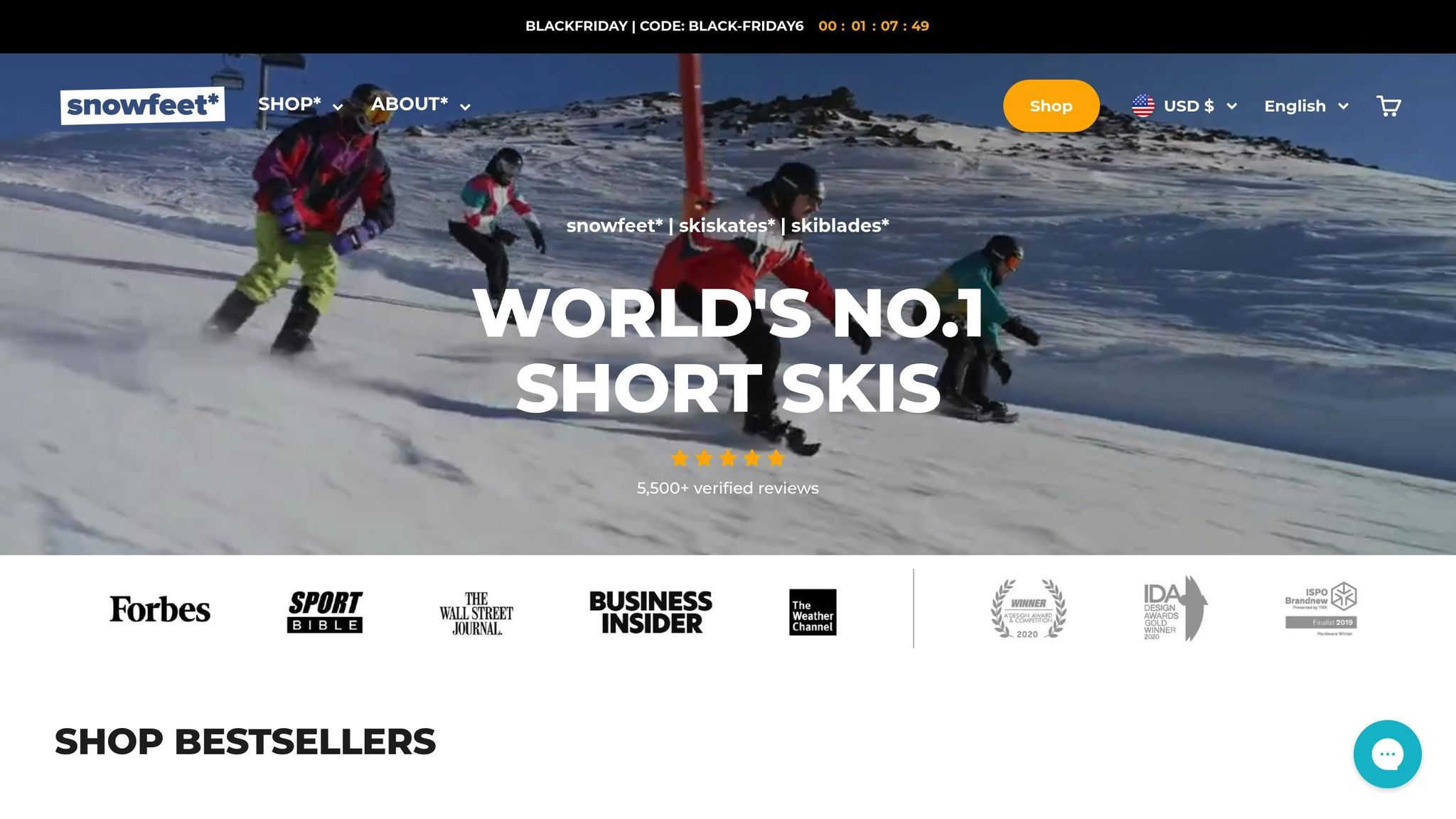
How Do Skiblades Work?
Skiblades have carved out a niche in the winter sports world, offering a fun and approachable alternative to traditional skis. Their clever design and ease of use make them a hit with beginners and seasoned skiers alike. Let’s break down what makes skiblades tick.
Design and Construction
At their core, skiblades are like mini versions of skis, but don’t let their size fool you - they pack a punch when it comes to performance. The construction typically starts with a wood or foam core, reinforced with fiberglass or carbon fiber. This layering gives skiblades the perfect mix of flexibility and strength, so they can handle varied terrain while staying durable.
The edges are where the magic happens. Skiblades feature steel edges along the sides, just like traditional skis, which help grip the snow during turns or stops. Thanks to their shorter length, these edges are proportionally wider, giving you better control and stability.
Bindings are another standout feature. Snowfeet* skiblades, for example, use universal bindings that work with regular winter boots, snowboard boots, or even sturdy hiking boots. With adjustable straps and heel pieces, these bindings are super accommodating, making them a great option for families or rental setups.
Then there’s the rocker and camber profile - a fancy way of saying how the blades are shaped. Most skiblades have a slight curve (rocker) at the tips and tails, paired with a traditional camber underfoot. This combo makes turning a breeze and helps with float in powder while keeping a solid grip on harder snow. Snowfeet* models even add a progressive flex pattern: softer tips for forgiveness and stiffer midsections for control.
To top it off, premium skiblades use high-quality base materials like sintered polyethylene, which glides smoothly and holds wax well. Their shorter length reduces snow contact, cutting down on friction and making them incredibly maneuverable. All these design elements come together to create a ride that’s intuitive and fun.
Using Skiblades: Basics for Beginners
Getting the hang of skiblades is refreshingly simple. Their compact size allows for a more natural, upright stance - no need to fight with the forward pull you might feel on longer skis. Just keep your stance hip-width apart, knees slightly bent, and your weight centered for balance and control.
Turning is where skiblades truly shine. Unlike traditional skis that need wide, carved turns, skiblades respond to small weight shifts and ankle movements. A little lean here or there, and you’re off making quick, sharp turns. This responsiveness makes them a favorite for beginners looking to build confidence.
When it comes to slowing down or stopping, traditional techniques like the "pizza wedge" still work, but many find that quick, short turns naturally regulate speed. And because skiblades are so compact, moves like the hockey stop are easier to master. Plus, their shorter length minimizes the leverage that can cause falls, so even if you wobble, small corrections are usually enough to stay upright. Beginners often find themselves progressing quickly, building skills that translate easily to traditional skis later on.
Terrain Options
One of the coolest things about skiblades is how versatile they are.
- Groomed runs: Their short length lets you make rapid, precise turns, perfect for practicing carving techniques.
- Moguls: Skiblades excel in tight mogul fields where longer skis can feel clunky. Navigating bumps becomes less tiring and more fun.
- Powder: While the technique differs from traditional powder skiing, skiblades perform well with a playful, dynamic style. Quick turns and momentum are key here.
- Terrain parks: Their reduced swing weight makes tricks, rail slides, and jumps easier to control, which is why freestyle skiers often use them for learning new moves.
- Tree skiing: Tight spaces? No problem. Skiblades maneuver through narrow gaps and tight chutes with ease.
- Variable conditions: Whether you’re dealing with icy patches, powder, or crud, the quick response of skiblades helps you adapt in real time.
For backcountry adventures, skiblades are a game-changer. They’re lightweight and portable, so you can strap them to your backpack for a hike to untouched slopes or use them as emergency descent gear. Snowfeet* models, in particular, showcase this versatility. Whether you’re tackling icy East Coast runs, powdery Rockies slopes, or the mixed conditions of the Pacific Northwest, skiblades are ready for it all, making every ride a unique and enjoyable experience.
Why Skiers Love Skiblades
Skiers of all levels, from beginners to seasoned pros, rave about skiblades for their quick responsiveness and unmatched convenience.
Maneuverability and Control
Skiblades deliver a skiing experience that's completely different from traditional skis, thanks to their shorter length. While regular skis typically measure between 150–180 cm, skiblades range from just 65–120 cm. This size difference means skiblades are incredibly responsive, allowing for sharp, quick turns with minimal effort. Whether you're weaving through crowded slopes or navigating tight, tree-lined trails, skiblades make it feel effortless.
Another bonus? They're lightweight. This means less fatigue for your legs, so you can enjoy longer days on the mountain. Snowfeet* skiblades are designed with agility in mind, giving beginners an easier, more forgiving ride while offering the precision that experienced skiers crave.
But the perks don’t stop at performance. These blades are a game-changer when it comes to convenience.
Portability and Convenience
For American skiers who love to hit the road (or skies), skiblades are a dream. Traveling with traditional skis can be a hassle - not to mention expensive. Airlines often charge between $30 and $150 each way for oversized ski bags, and those bags themselves can cost anywhere from $100 to $300. Skiblades, on the other hand, are compact and lightweight. Many Snowfeet* models, especially the shorter ones, fit easily into a standard backpack or carry-on bag. That means no extra fees, no special handling, and no worries about damaged gear.
"You can fit them in a standard backpack and take them wherever your adventure leads, from sledding hills to snowy trails or ski resorts. If you want a pleasant and hassle-free journey, opt for short skis - you won't even notice that you are travelling with skis!" - Snowfeet Team
And it’s not just about air travel. Whether you're tossing them in your car for a quick trip to the local slopes or packing light for a winter hike, skiblades make it easy to travel without the bulk of traditional gear.
Easy Learning for All Skill Levels
One of the biggest hurdles for new skiers is the learning curve that comes with traditional long skis. Skiblades simplify the process. Their shorter length reduces leverage during falls, making it easier to recover and build confidence. Beginners can pick up the basics faster, while experienced skiers find they can push their limits with less risk. Whether you're trying out new tricks or refining your technique, skiblades make it less intimidating.
Snowfeet* caters to all skill levels with a variety of models. Their 26-inch (65 cm) skiblades are perfect for beginners or park riders, while the 39-inch (99 cm) models offer more stability for intermediate skiers looking to carve sharper turns. For those who want the best of both worlds, the 47-inch (120 cm) short skis provide a bridge between traditional skiing and the playful, nimble feel of skiblades. This versatility makes them a fantastic option for anyone looking to enjoy winter sports without the steep learning curve.
Comparison Table: Skiblades vs Regular Skis and Snowboards
| Feature | Snowfeet* Skiblades | Traditional Skis | Snowboards |
|---|---|---|---|
| Length | 26–47 inches (65–120 cm) | 59–71 inches (150–180 cm) | 55–65 inches (140–165 cm) |
| Maneuverability | Quick, tight turns | Requires wider turns | Great for carving, less effective in tight areas |
| Portability | Fits in backpacks/carry-ons | Needs oversized ski bags | Needs oversized snowboard bags |
| Travel Costs | $0 (carry-on friendly) | $30–150 each way (airline fees) | $30–150 each way (airline fees) |
| Storage Space | Minimal, fits in closets | Requires more storage space | Moderate storage needed |
| Terrain Versatility | Works on various terrains | Best on groomed runs and powder | Struggles in tight trees or moguls |
| Price Range | $250–775 | $300–1,200+ | $200–800+ |
| Boot Compatibility | Works with winter, snowboard, or ski boots | Ski boots only | Snowboard boots only |
sbb-itb-17ade95
Snowfeet* Skiblades: Models, Features, and Benefits
Snowfeet* has carved out a niche in the skiblade market, becoming a go-to brand for those looking for compact, easy-to-use skiing equipment. Their lineup spans from ultra-portable mini skis to models built for serious fun on the slopes. Let’s take a closer look at what they offer.
Snowfeet* Models: A Quick Rundown
Snowfeet* caters to a variety of skiing preferences and skill levels. Here’s a breakdown of their standout models:
- Mini Ski Skates (38 cm / 15 inches): At $250, these are the most compact option, perfect for beginners. They’re lightweight, fit in a backpack, and work with standard winter boots.
- Snowfeet PRO (50 cm / 20 inches): Priced at $275, this model steps up the game with adjustable bindings and a choice of colors, offering a bit more versatility.
- Skiskates (44 cm / 17 inches): Starting at $575, these are designed for ski slopes and feature a wood core for a premium feel.
- Skiblades (65 cm / 26 inches): Built for carving and snowpark fun, these skiblades cost $635 and deliver excellent control.
- Skiblades (99 cm / 39 inches): At $675, this model offers increased stability, making it a great choice for intermediate to advanced skiers.
- POWDER (99 cm): Also priced at $675, this version is tailored for powder snow, offering better flotation compared to other models.
- Short Skis (120 cm / 47 inches): At the top of the range, these skis cost $775 and combine high performance with the maneuverability of shorter equipment, ideal for experienced skiers looking to transition from traditional long skis.
What Sets Snowfeet* Apart?
Snowfeet* has taken a fresh approach to winter sports gear. Unlike traditional ski brands like Rossignol, K2, or Salomon, which often focus on long skis and specialized boots, Snowfeet* prioritizes flexibility and ease of use. Their equipment is designed to work with regular winter boots, eliminating the need for pricey, brand-specific gear.
Their philosophy flips the "longer is better" mindset on its head. Shorter skis mean greater agility, quicker learning, and a more playful experience - all without compromising performance. This makes winter sports more accessible to a wider audience, allowing more people to enjoy the slopes with gear they may already own.
Why Snowfeet* Works for U.S. Skiers
For skiers in the U.S., Snowfeet* offers some practical perks. All prices are listed in USD, so there’s no need to worry about currency conversions or hidden fees.
Their compact design is a game-changer for travel. Whether you’re heading to Vail or Park City, these skiblades are easy to transport and can often be packed in carry-on luggage. That means you can skip the hassle (and cost) of checking bulky ski gear.
Snowfeet* is reshaping the way we think about ski equipment, offering a fun and versatile alternative to traditional skis. If you’re looking for something different to spice up your time on the slopes, they’re worth checking out.
Choosing the Right Skiblades for Your Needs
Finding the perfect pair of skiblades isn’t just about picking the first shiny option you see. It’s about matching your skiing style, skill level, and goals. Snowfeet* gets this, offering a lineup tailored to different types of skiers - no cookie-cutter solutions here.
Things to Keep in Mind
Length plays a big role. Shorter skiblades are easier to control and great for beginners, though they’re not as stable at high speeds. For example, Snowfeet’s 38 cm Mini Ski Skates are ideal if you’re just starting out or want something compact enough to toss in a backpack. On the flip side, the 120 cm Short Skis provide a more traditional skiing vibe while keeping the fun, playful edge that makes skiblades unique.
Your skill level matters. If you’re new to skiing, shorter models will help you gain confidence quicker. But if you’re transitioning from long skis, something like the 99 cm models might feel more familiar and make the switch smoother.
Think about where you’ll ski. Groomed runs? Any Snowfeet model will do the job. Love powder? The POWDER 99 cm version is built for better floatation. If you’re into park riding, the 65 cm Skiblades are your go-to for sharp turns and tricks.
Boot compatibility is a game-changer. Snowfeet* skiblades work with regular winter boots, saving you from splurging on pricey ski boots.
Here’s a quick breakdown of Snowfeet* models to help you decide.
Snowfeet* Models at a Glance
| Model | Length | Price | Best For | Key Feature |
|---|---|---|---|---|
| Mini Ski Skates | 38 cm (15") | $250 | Beginners, portability | Fits in backpack |
| Snowfeet PRO | 50 cm (20") | $275 | Versatile use | Adjustable bindings |
| Skiskates | 44 cm (17") | $575 | Ski slopes | Wood core construction |
| Skiblades | 65 cm (26") | $635 | Carving, snowparks | High maneuverability |
| Skiblades | 99 cm (39") | $675 | All-mountain | Stability + agility |
| POWDER | 99 cm (39") | $675 | Powder snow | Better flotation |
| Short Skis | 120 cm (47") | $775 | Advanced skiers | Traditional feel |
Recommendations Based on Your Style
Beginners: The $250 Mini Ski Skates are a solid choice. They’re affordable, easy to use, and their short length makes them less intimidating. Plus, if skiing turns out not to be your thing, you haven’t spent a fortune.
Freestyle and park fans: The 65 cm Skiblades ($635) are perfect for tricks, rails, and jumps. They’re nimble, making rotations and switch landings feel effortless.
All-mountain skiers: The 99 cm Skiblades ($675) are a versatile pick. They can handle groomed trails, light powder, and everything in between while keeping the ride playful and fun. If you’re chasing powder, go for the POWDER 99 cm model ($675) for better floatation in deeper snow.
Experienced skiers moving from long skis: The 120 cm Short Skis ($775) are a great middle ground. They offer the stability you’re used to but with all the perks of shorter, more agile gear.
Snowfeet* makes it easy to mix and match skiblades for different conditions. Many skiers even grab multiple pairs without breaking the bank - a luxury that’s hard to imagine with traditional ski brands.
Conclusion: The Skiblade Advantage
Skiblades are shaking up the skiing scene in the U.S., offering a compact and agile alternative to the traditional, bulky setups. While many ski brands focus on longer and heavier equipment, Snowfeet* has taken a different route, proving that smaller skis can make skiing more accessible and, frankly, a lot more fun. Their approach prioritizes ease of use and versatility, which is a game-changer for many skiers.
Snowfeet* models, priced between $250 and $775, tackle some of the biggest hurdles in skiing - steep learning curves, high costs, and cumbersome gear. Compared to traditional setups that can cost a small fortune and require complex logistics, these skiblades are a breath of fresh air.
Portability is a game-changer. Imagine packing your 38 cm Mini Ski Skates into a backpack or easily fitting your 99 cm Skiblades into your car trunk. No need for roof racks or hours of planning just to hit the slopes. As Uncrate put it, Snowfeet* skiblades are "Far more portable and affordable than traditional skis or snowboards". This simplicity makes spontaneous mountain trips a reality.
The ease of learning is another big win. Thanks to their lightweight and responsive design, skiblades help riders build confidence in just a few minutes, reducing the risk of falls and making the whole experience more enjoyable.
And then there’s the flexibility. Whether you’re cruising groomed trails with the 120 cm Short Skis, hitting jumps in the terrain park with 65 cm Skiblades, or floating through powder on the POWDER 99 cm model, these skiblades adapt to whatever kind of adventure you’re after. Traditional setups just can’t compete with this level of versatility.
For skiers in the U.S. who are tired of the same old routine, Snowfeet* brings something fresh to the table. By blending the best parts of skiing and snowboarding, they’ve stripped away the hassles and created what they call the "Most Fun Winter Sport Ever." Their skiblades break down barriers, making winter sports more inclusive and welcoming. Whether you’re a beginner looking for an easy way to start or a seasoned skier rediscovering the joy of the slopes, skiblades offer a simpler, more enjoyable experience.
In short, the skiblade advantage is about more than just the gear. It’s about freedom - freedom to learn quickly, travel light, and enjoy every moment on the mountain.
FAQs
How do skiblades compare to traditional skis for beginners in terms of learning and ease of use?
Skiblades, especially those from Snowfeet, are a fantastic option for beginners because they’re much easier to manage than traditional skis. Thanks to their shorter length, turning and controlling your movements feels way less intimidating, helping new skiers gain confidence quickly. Plus, their compact size cuts down on resistance, so you can focus on learning the basics without feeling like you're in over your head.
Unlike traditional skis, which can be bulky and tricky to handle, skiblades are lightweight and easy to maneuver. They’re great for both kids and adults, whether you’re cruising down groomed slopes or testing the waters on gentler hills. Skiblades make skiing approachable and fun from the very beginning.
Can skiblades handle different terrains like powder and moguls effectively?
Skiblades are a fun and adaptable choice for tackling different terrains. If you're navigating tight, technical moguls, shorter skiblades (around 65 cm) are your best bet - they're quick to maneuver and give you great control. On the flip side, longer skiblades (99 cm or even 120 cm) shine in powder, offering better stability and float for those softer, deeper conditions. Whether you're carving up packed snow or handling trickier spots, skiblades bring a fresh twist to skiing, standing out as a solid alternative to traditional skis or snowboards.
How do I choose the right skiblade length and model for my skiing style and skill level?
When choosing skiblades, it’s important to consider your skiing experience, personal style, and the type of terrain you’ll be exploring. Here’s a quick breakdown to help you decide:
- Shorter skiblades (around 65 cm): These are great for sharp turns and have a playful, skate-like feel. They’re a solid choice for beginners or anyone who values agility and quick movements.
- Mid-length skiblades (around 99 cm): These strike a balance between control and versatility, making them suitable for a variety of terrains and skill levels.
- Longer skiblades (around 120 cm): If you’re after extra stability and a smoother ride, these are the way to go. They feel more like traditional skis, so they’re ideal for experienced skiers or those looking for something familiar.
Snowfeet skiblades cover all these bases. They’re portable, easy to use, and perform beautifully - whether you’re just starting out or you’ve been hitting the slopes for years, there’s a Snowfeet model ready to take your winter adventures up a notch.







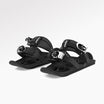
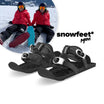

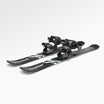



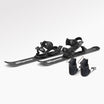







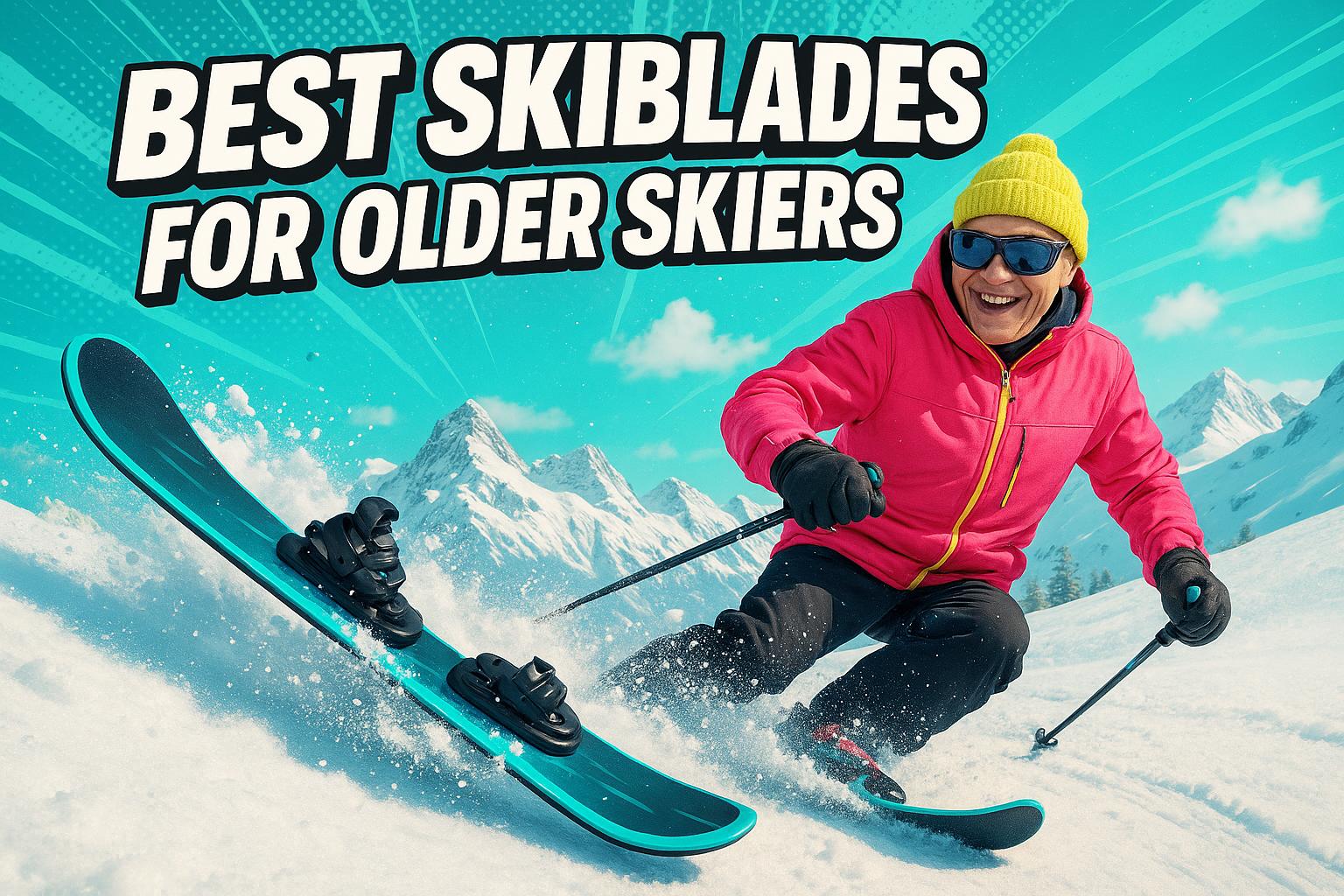
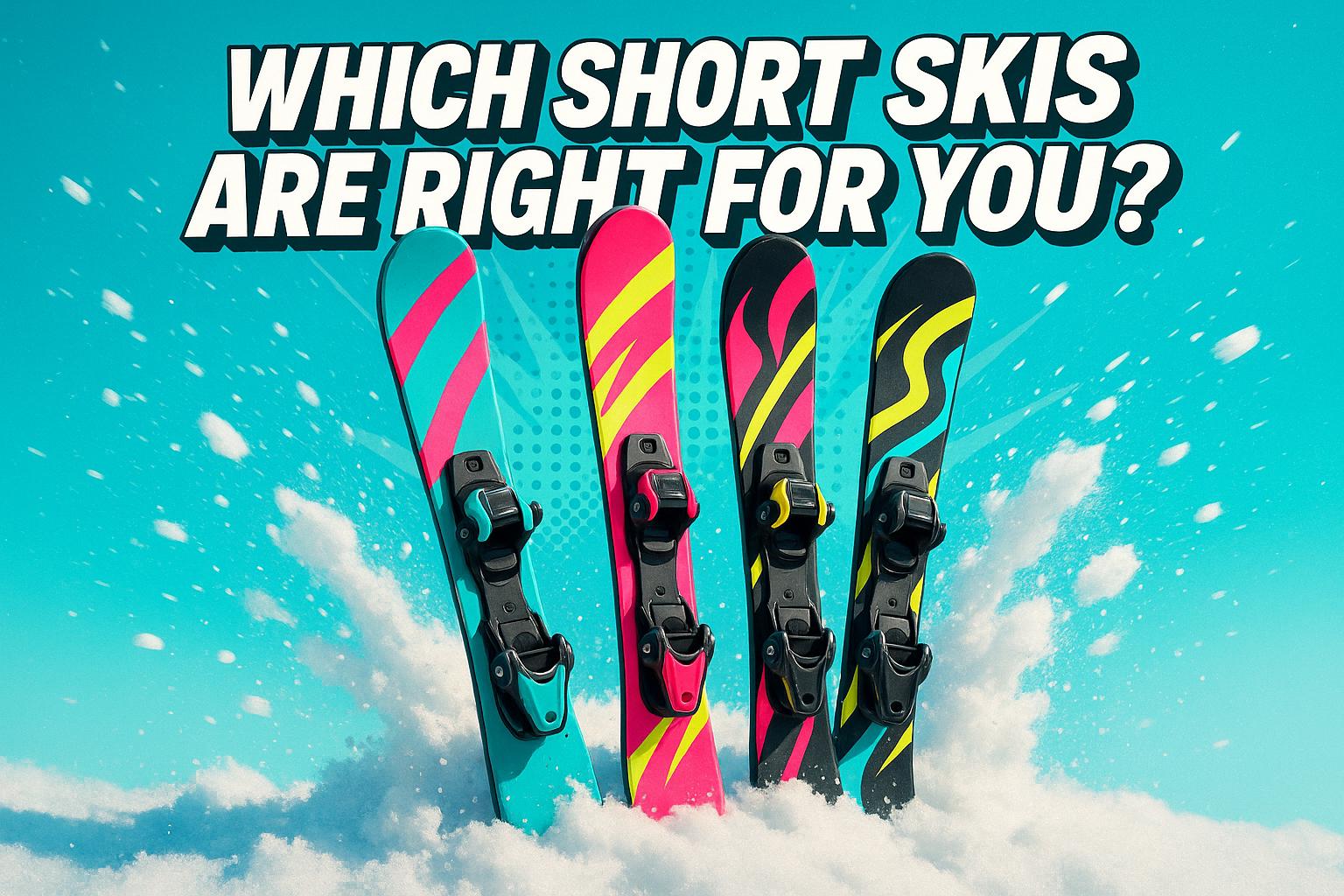




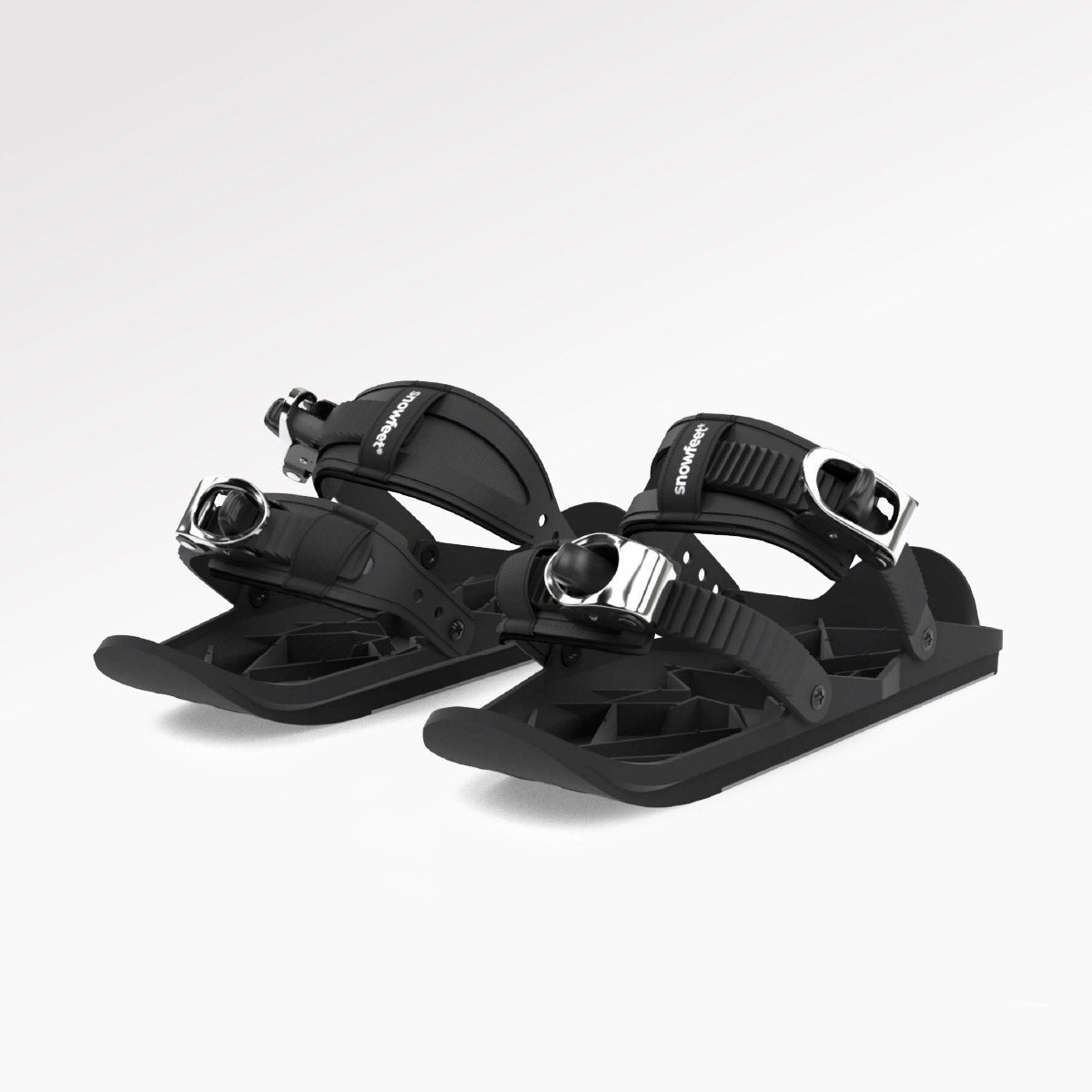
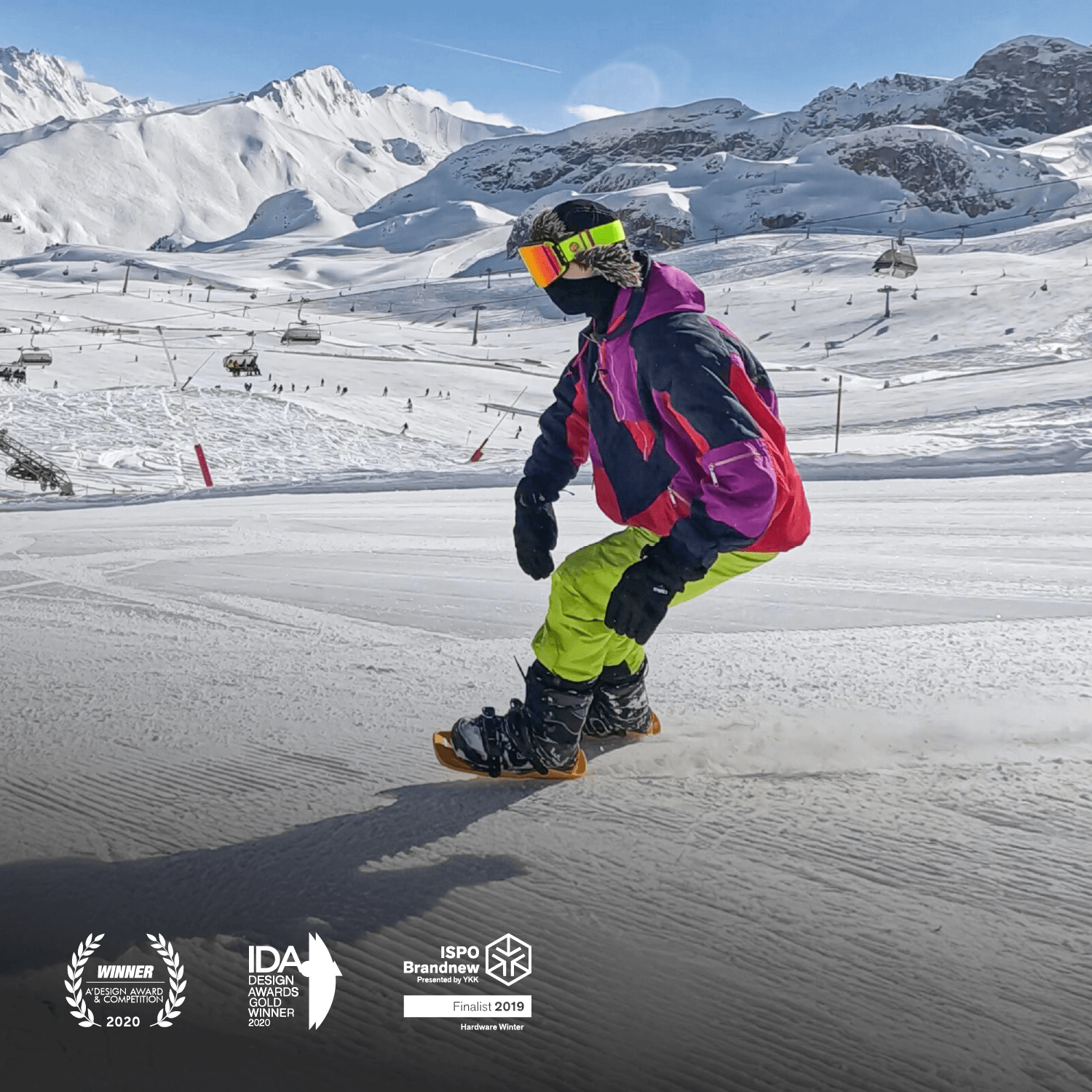


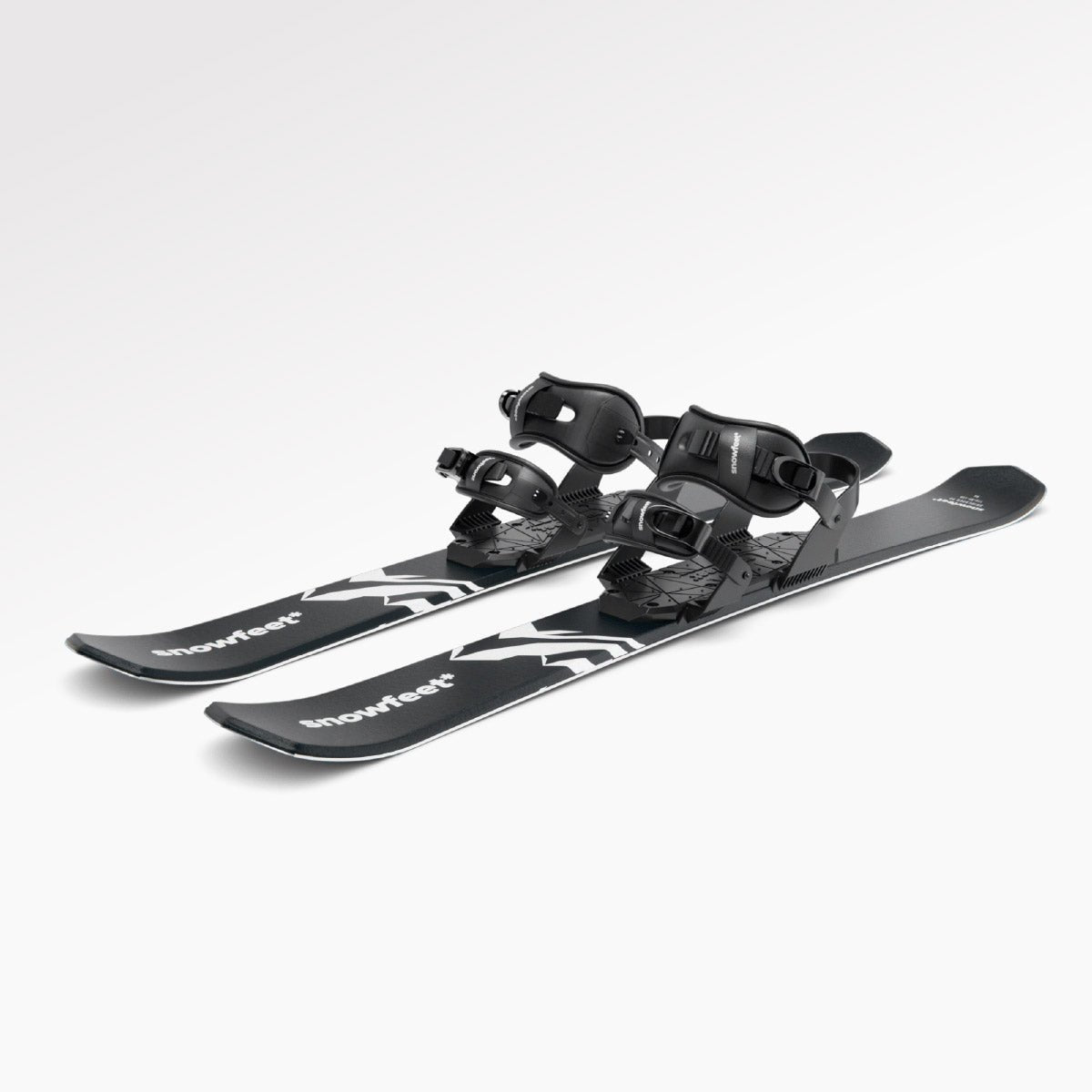

Lämna en kommentar
Denna webbplats är skyddad av hCaptcha och hCaptchas integritetspolicy . Användarvillkor gäller.